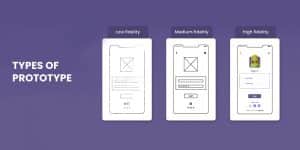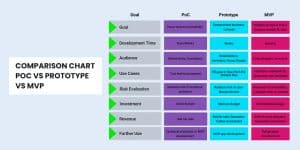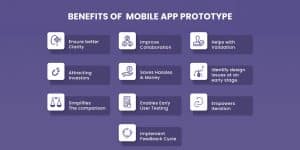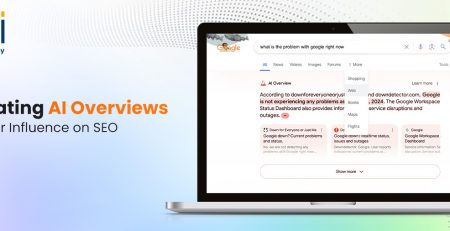Mobile App Prototyping: The Key to Effective Development and User Experience
App development has as many pitfalls and challenges as any business venture. This is why it’s always wise to take precautionary steps as you go through the mobile app development process.
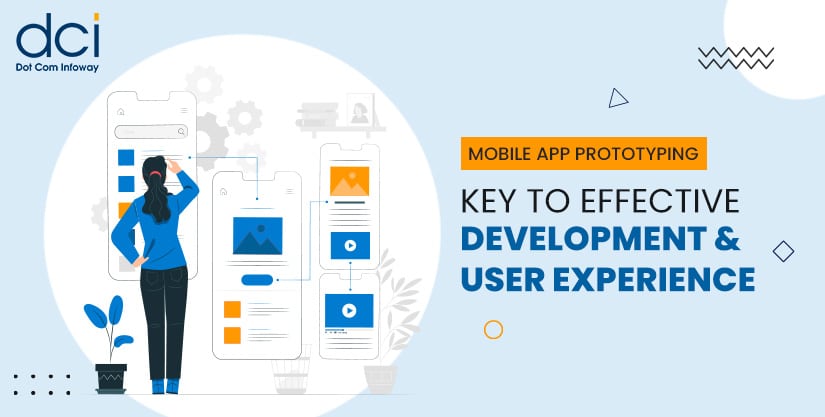
What Mobile App Prototyping Is All About?
Think of how an inventor creates a physical model or working prototype of their invention to showcase its functionality and design. There’s really not much difference to that when it comes to Mobile App Prototyping.
It’s the process of providing a tangible representation of your idea before it becomes a full-fledged product (in this case, an actual mobile app). App prototypes serve a multitude of purposes, from research and budget planning to collaborations and pitching to investors.
Underlining the Important Role of App Prototyping
Just because they’re only “prototypes” doesn’t mean that they’re simple or too basic. They also immerse users in engaging experiences by showcasing how features actually work as well, complemented by the fundamental elements of mobile app design.
As you serve and demonstrate these functional and visual elements, you’ll be able to help potential investors and team members understand its capabilities and features. In turn, you can gather invaluable feedback from which you can base most of your improvements. This is a win-win because, for one, you’ll always have a clear idea of what to truly focus on, allowing you to make the most out of your present resources.
Who knows? Your findings may also well underscore the importance of UI/UX design for you and learn more about the proper incorporation of web design elements. As such, we can’t really deny the benefits of Mobile App Prototyping in further expanding your knowledge as an app developer or owner as well.
Steps to Create a Mobile App Prototype
1. Ignite Your App’s Spark
As in any app, you’ll only be able to make it come to life by identifying the problem that it will solve. Your journey begins once you’ve properly outlined your mission, vision, and goals, too.
What will you give you direction? Oftentimes, it’s by doing thorough market research. You’ll have to list all the factors that will influence your development process. Always remember that effective prototypes are anchored to a deep understanding of their purpose – without it, you’ll only be prone to resource wastage and delays.
2. Craft a Blueprint for Your Prototype
With the ideation phase complete, it’s time to dive into the core functionalities that will shape your prototype. To properly build an app prototype, you’ll need to develop a comprehensive list of features and functions, while taking into consideration your chosen niche and the exact type of app you mean to develop.
The blueprint you come up with is necessary to prepare your budget and roadmap. Moreover, it allows you to easily organize your team, particularly how you’re going to assign them the correct tasks based on their talent and skills.
3. Outline Your Prototype’s Evolution Over Time
Sketches and wireframes can be sued to define the user flow and the app’s overall architecture. Gradual progression is the way to go for Mobile App Prototyping, more often than not because it allows you to tweak your ideas and discover options you may have missed.
The next stage comes mockups, which should more or less be able to serve as a basic visual representation of the app. And the rest of the steps below should follow.
Remember: it’s not a race – stick to this mindset especially if you want to release a solid prototype after all your efforts.
4. Elevate Its Appeal Through UI/UX Elements
By the time you reach this step, your basic prototype structure should already be in place. It’s now time to weave the magic of mobile game UI design (assuming you’re developing a game).
Feel free to work with skilled designers or well-known UI/UX design services to add that inimitable, attractive visual charm and interactivity that will wow your future investors and stakeholders. Aim to make the experience as immersive as possible by aligning design with functionality. Your content will only better resonate with your target audience this way.
Incidentally, if you want to look for more actionable UI design tips, take the time to read our inputs in this post.
5. Keep Testing the Design
To be fair, almost any app should be consistently tested, so it’s not really a surprise that Mobile App Prototyping espouses this as well. Welcome every valuable feedback you can get – the more varying the sources, the better. They can be your immediate colleagues, but they can also be your personal acquaintances and family.
A well-rounded approach begets well-rounded insights. Although you have to make sure that end users agree to maintain your app’s discretion. You can use tools like Figma to care for feedback gathering.
You have to settle for no less than regular tests to hone and refine your app prototype.

From Idea to Success – Follow the Steps to a Brilliant Prototype!
Navigate the app development challenges with confidence by incorporating Mobile App Prototyping. Unveil the secrets of successful prototyping and elevate your app’s appeal with captivating UI/UX elements.
6. Present It to Your Stakeholders
By this stage, you should be sure that you’re ready to share a well-tested and well-designed prototype. We’re talking about a product that will spark interest and trigger action.
One key way to boost trust is to back whatever you present with hard data. This data can come from actual user feedback, survey responses, etc. More importantly, you should be able to present your vision as crystal-clear and compelling as possible, so that whoever you’re wooing will know your prototype’s true potential.
7. Keep Improving Your App
Two important ways you can do this are by paying attention to feedback and understanding issues that will (almost always inevitably) spring up. Listen to the feedback that your potential investors and stakeholders will give after your demonstration.
Who knows? They may be able to point out a key aspect of UI/UX that you failed to incorporate in the prototype.
Conclusion
On the whole, once you decide to create a prototype app, you have to accept the fact that it’s going to be a dynamic process. Your prototype should grow as you perform the seven steps above – and by “grow”, we mean it should be consistently on an improving trajectory (rather than a dwindling one).
The latter can happen if you partner with subpar services. Make sure you’re only weighing your options among the best mobile app prototyping services to illuminate your prototype’s potential.
FAQ
How Much Does an App Prototype Cost?
This ultimately depends on the service you choose, particularly where they’re based and their current rates. The typical range is between $3,000 to a little under $16,000. This substantial difference should tell you just how varying the costs are even if you’re developing a “lighter” version of an app.
How Long Does It Take To Build an App Prototype?
The advantage of focusing on building an app prototype is that it takes way less time. Some projects only take a week to complete, for instance. It has to be noted that AI solutions can actually build a working prototype in minutes!
The scope and any unforeseen hitches will inevitably affect (positively or negatively) development time.
How To Make an App Prototype for Free?
As far as we know, there is no possible way to do this. There are certain “free” builders out there such as Builder.ai that allegedly do app prototyping free of charge. But they inevitably don’t offer the best that their service has to offer unless you pay for it.

